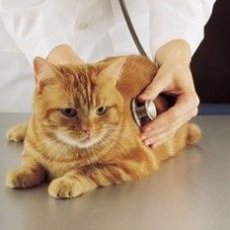How to give medicines to a cat
Last reviewed: 20.11.2021

All iLive content is medically reviewed or fact checked to ensure as much factual accuracy as possible.
We have strict sourcing guidelines and only link to reputable media sites, academic research institutions and, whenever possible, medically peer reviewed studies. Note that the numbers in parentheses ([1], [2], etc.) are clickable links to these studies.
If you feel that any of our content is inaccurate, out-of-date, or otherwise questionable, please select it and press Ctrl + Enter.

Do not give the cat any medicine until you talk to the veterinarian to make sure that this medicine is suitable for the cat and is appropriate in the circumstances. You should also ask for advice on how to give medicine and find the right dose for your cat.
Tablets, capsules and powders
Undoubtedly, the best way to give a cat a pill is to use a commercial treat made specifically for this purpose. Despite the fact that the cat can gently take the tablet out of a whole bowl of canned food, these delicacies are quite sticky, which makes the removal of the tablet almost impossible. They are also soft, so they easily stick a pill. Examples are Pill Pockets and Flavor Doh.
The introduction of tablets in this way makes it possible to avoid daily fighting with a cat in an attempt to give it a medicine that can cause anxiety in both of you. This also helps to avoid medical problems associated with pushing the pill into the cat's throat.
You can also try to make small "meatballs" from canned cat food or tasty pieces of meat. Give the cats one or two meatballs without a pill, then one with a pill. Then give another meatball without a pill, so that the cat continues to take treats, even if it senses the taste of the medicine.
Of course, these methods will work only if it is acceptable to give the cat a medicine with food. Always consult a veterinarian on this matter. If the tablets can not be given with food, you will need to humble the cat and give it to the pill directly.
If only the cat is not used to taking the pills, it may be helpful to wrap her body and paws in a towel.
Place the thumb and index finger on the sides of the cat's muzzle above and behind the mustache. Gently press the area between the teeth. When the cat opens its mouth, press the lower jaw and place the pill as far as possible on the tongue. Close the cat's mouth and massage or rub her throat until she swallows. Also, many cats swallow, if quietly blow them in the nose or the muzzle. If the cat licks the nose, it is likely that the tablet is swallowed. After the tablet, always give the cat at least one teaspoon (5 ml) of water from a syringe or pipette. This helps the pill to get into the stomach where it can act, rather than remain in the esophagus, where it does not work and can actually cause harm. Tablets, stuck in the esophagus, can cause vomiting and even irritation of the lining of the esophagus. If the pills are constantly stuck in the esophagus, the esophagus may narrow or sores may appear. The same applies to capsules. Therefore, after pills that are taken without food, it is always necessary to give the cat water.
Do not break the tablets. Tablets, powdered in the powder, can have an unpleasant taste, and this is not liked by cats. Many tablets have a protective membrane that is important for delayed release in the intestine.
Liquids
Liquid medications, including electrolytes and aqueous solutions, are injected into the cheek pouch between the teeth and cheek. To introduce a liquid, a medicine bottle, a pipette, a plastic syringe without a needle can be used.
Adult cats can give up to 3 teaspoons (15 ml) of liquid medicine at a time. Measure the required amount in a bottle, syringe or pipette. (Use a plastic pipette if the cat bites it). Fix the cat, as for the introduction of tablets (described above). Enter the tip of the dispenser in the cheek pouch and, lifting the cat's chin up, slowly enter the medicine. The cat will swallow it automatically.
Injections
The introduction of foreign substances into the body always carries the danger of an acute allergic and anaphylactic reaction. Treatment of anaphylactic shock requires immediate intravenous injection of epinephrine (epinephrine) and oxygen. Therefore, it is better that the veterinarian does the injections. As a warning, it should be noted that you can not inject the drug by injecting a cat that has already had an allergic reaction to this medicine.
If you need to do an injection at home (for example, a cat is sick with diabetes), let the vet show how to do it. Some injections are done subcutaneously, others - intramuscularly. The instruction on the package will tell you how to do the injection correctly.
 [1]
[1]
